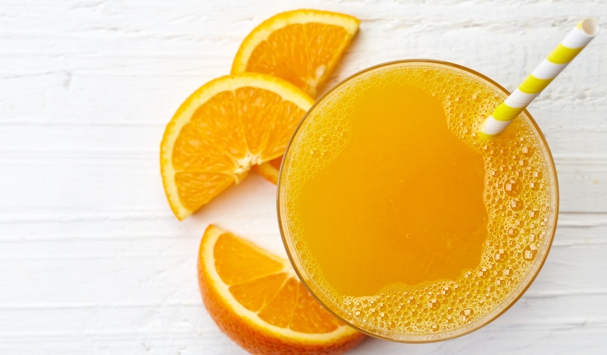The first step in lifting the veil on citrus versatility is to deconstruct fruits into their component parts. Although the variety of citrus fruits is manifold, some of them, such as yuzu, have less juice than others, like lemons. One thing they all have in common is the peel.
Citrus fruits have become a popular raw material for the food and fragrance industry because of their freshness and versatility. The future of citrus-based scent and taste solutions remains natural, but may not always be based on just citrus fruits.
Symrise is also pioneering the development of citrus aromas from other natural sources. Extracting and isolating a particular scent or taste requires fully understanding what makes it such a precious, unique, and sought-after fruit. We have achieved this by investing in new technologies and providing a creative platform. Merging both of these factors has led to manufacturing solutions that expand the world of citrus in all dimensions to meet our customers’ needs.
72%
of all citrus fruits are eaten fresh by consumers
70%
of all processed citrus fruits come from Latin America
84%
of all citrus fruits processed are oranges
The Secrets of Citrus Ingredients
We do not simply understand smell and taste, we decode it. We do not simply create consumer preference, we craft consumer desire.Gaelle Dami, Director Global Marketing Communication, Food & Beverage
The journey into citrus begins with its peel. Once you pierce it, freshness erupts as scent molecules fill the room.
Transformation of Citrus Fruits

How does a citrus taste get into a soft drink?
It all begins in the fruit processing plant. Here, the fruits are squeezed for the juice—but a citrus fruit has so much more hidden in it! The most important by-product of juice is the oil contained in the peel. It can be mechanically released from the oil sacs that are hidden in the peel, either by little needles that pierce the fruit’s skin or when the full fruit is first crushed. Once the oil is out, it gets separated from the juice or water that was used to wash it from the fruit’s remains. The most common way to separate it is with the help of centrifuges that isolate the peel oil and return the fruit material back into the process.

Juice and peel oil are the two most important products to obtain from the fruit—but there are more. Most processors collect the remains from the squeezed fruits—the exhausted peel, pulp, seeds, and other cell material—and use it to feed cattle; they like the citrus taste as well! However, this is normally just the easiest, not the most efficient, way to use all that the fruit has to offer. Modern processing technology allows fruit factories to generate much more value out of the same fruits.

The efficiency upgrade starts with the juice. Around the world, not all juices are used as is. Many are concentrated. The benefit of concentration is that the water content can be drastically reduced. This then lowers the juice volume that can be re-filled with water by the juice company in their final bottles or cartons. Most citrus juices are not consumed where they come from. The majority of citrus juices come from Latin America, especially Brazil, Argentina, and Mexico and are mainly consumed in Europe, the U.S., and Asia. This means that a lot of juice needs to be shipped around the world; concentration helps reduce the necessary shipment volume, saving money and reducing CO2 emissions in the transport. Juice marketers simply fill-up the concentrate with their local water up to its original strength.

Some directly squeezed juices - called not-from-concentrate (NFC) - stay as they are and are not further concentrated. This limits the possibility to generate additional by-products, though. Besides the juice concentrate itself, the evaporated water contains much of the aroma of the freshly squeezed juice - and this can be recovered. Many fruit processors separate two aromatic by-products from this: the essence oil and water phase. Combined, both contain most of the aroma of the original freshly squeezed juice and are usually added back into the juice concentrate to restore it to its former glory. They can also be added to other food and drink to give them the distinct taste of citrus, even to naturally flavored mineral water.
Expanding the World of Citrus
We have to make use of options that go beyond raw citrus materials to meet an ever-growing demand for naturalness. At Symrise, we are looking for natural alternatives for citrus taste and smell. Natural transformation is the key to future raw materials through both citrus by-products and other natural source materials. Aromatic herbs and spices are fractionated to isolate the taste of citrus fruits. Different starting materials are transformed into new, interesting compounds or blends.
Think of botanicals like lemongrass - they have a distinct lemon taste and smell alongside herbal notes. We can isolate this and use the fractions as natural building blocks for our flavor and fragrance creation. Another example is nootkatone, the most important aroma component of grapefruits. We can rather easily source valencene from oranges, transform it, and replace nootkatone, which is getting harder and harder to find.Uwe Schäfer, Manager Applied Research at Symrise
The spectrum of possibilities is endless. Valuable taste and scent solutions can be created to complement the original citrus-based raw materials by using the natural principles of fermentation and enzymatic kinetics.
In a fully natural way, we have the opportunity to create the odor and taste that consumers crave and overcome the sensory and physical limitations that citrus fruits bring with them. This takes the pressure off of our supply chain and ensures we have a broad range of options when we craft the solutions to meet our customers’ challenges. Our Citrus Oil Alternatives are one way of bringing this ambition to life.Damian Bellusci, Global Citrus Platform Director, Food & Beverage
From Orange Juice to Chewing Gum
An estimated 374 trillion sticks of chewing gum are made each year. People consume it for a variety of reasons, including stress relief, increased concentration, and perhaps most commonly, to combat bad breath.
Citrus fruits play a covert role in the chewing gum industry, especially when it comes to the dominant flavors like spearmint and peppermint. We create the compound Carvone from d-limonene, which is found in what was once considered a waste product—orange peels. This is now a critical component within many chewing gums, acting as a catalyst for that powerful spearmint flavor we all enjoy.


